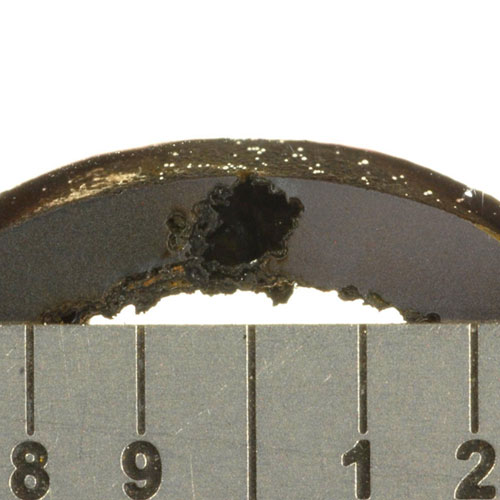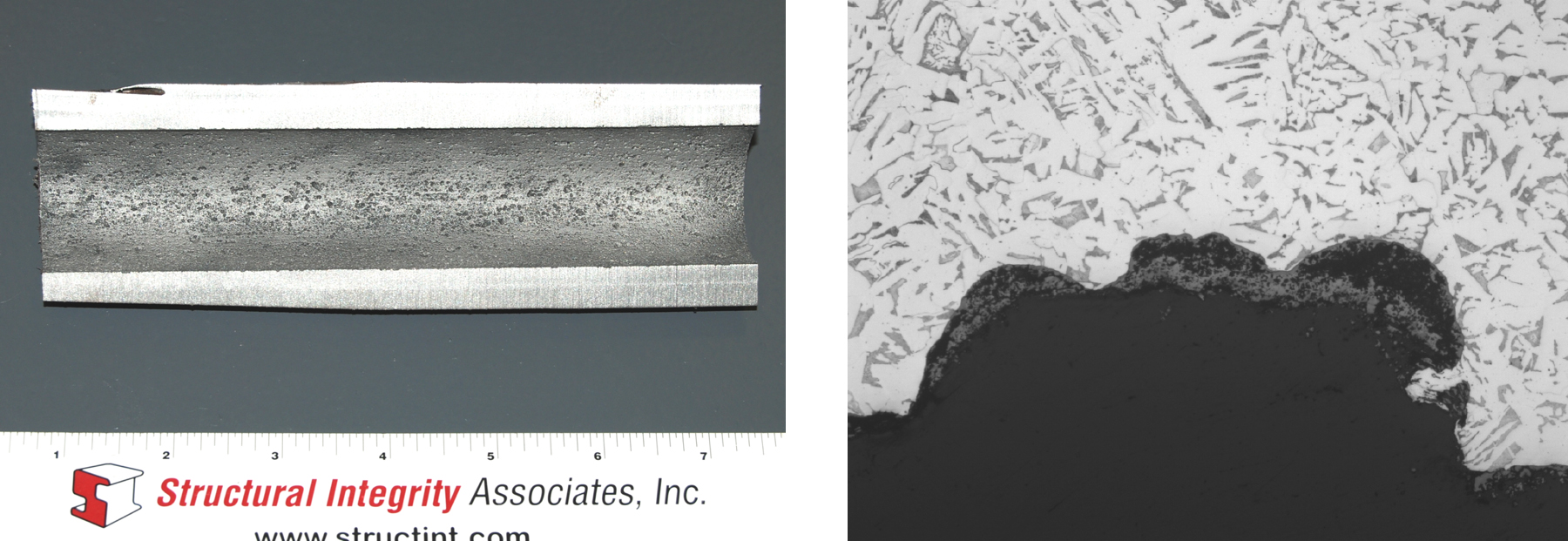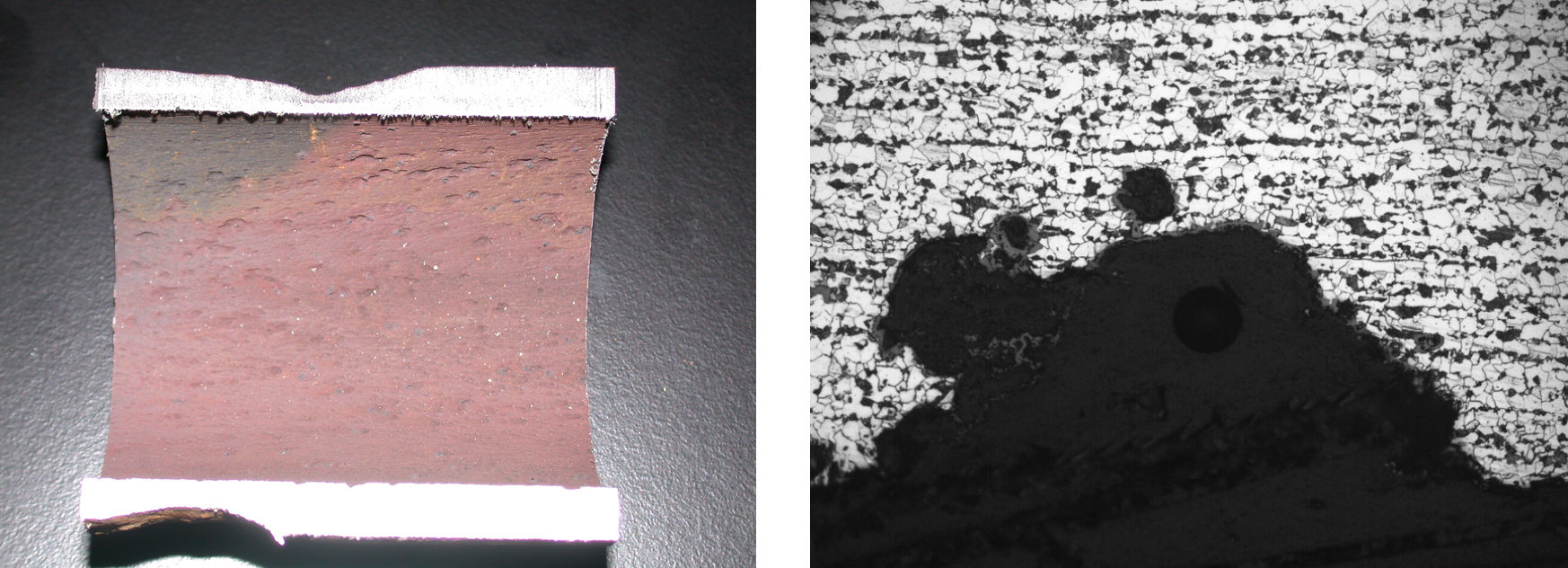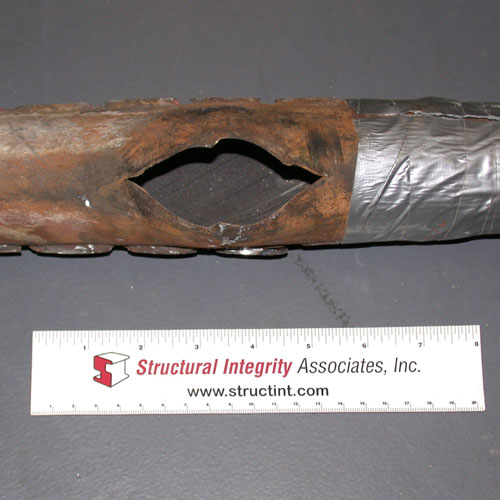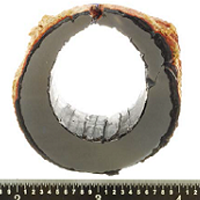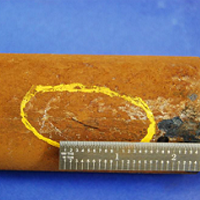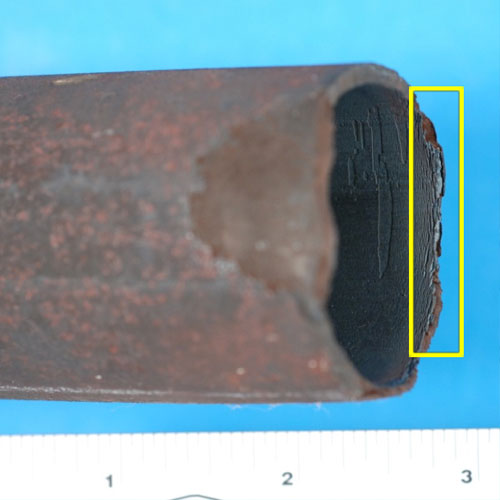Pitting Corrosion
Introduction
Pitting Corrosion in Conventional Fossil Boilers and Combined Cycle/HRSGs
Pitting is a localized corrosion phenomenon in which a relatively small loss of metal can result in the catastrophic failure of a tube. Pitting can also be the precursor to other damage mechanisms, including corrosion fatigue and stress corrosion cracking. Pits often are small in size and may be filled with corrosion products or oxide, so that identification of the severity of pitting attack by visual examination can be difficult.
Description
Mechanism
Pitting is a localized corrosion attack involving dissolution of the tube metal surface in a small and well-defined area. Pitting corrosion can occur in any component in contact with water under stagnant oxygenated conditions. Pitting in economizer tubing is typically the result of poor shutdown practices that allow contact with highly-oxygenated, stagnant water. Pitting also may occur in waterwall tubing as a result of acidic attack stemming from an unsatisfactory chemical cleaning or acidic contamination.
Pits that are associated with low pH conditions tend to be numerous and spaced fairly close together. The pits tend to be deep-walled compared to the length of the defect. A breakdown of the passive metal surface initiates the pitting process under stagnant oxygenated conditions. A large potential difference develops between the small area of the initiated active pit (anode) and the passive area around the pit (cathode). The pit will grow in the presence of a concentrated salt or acidic species. The metal ion salt (M+A-) combines with water and forms a metal hydroxide and a corresponding free acid (e.g., hydrochloric acid when chloride is present). Oxygen reduction at the cathode suppresses the corrosion around the edges of the pit, but inside the pit the rate of attack increases as the local environment within the pit becomes more acidic. In the event that the surfaces along the walls of the pit are not repassivated, the rate of pit growth will continue to increase since the reaction is no longer governed by the bulk fluid environment. Pitting is frequently encountered in stagnant conditions that allow the site initiation and concentration, allowing the attack to continue.
The most common cause of pitting in steam touched tubing results from oxygen rich stagnant condensate formed during shutdown. Forced cooling and/or improper draining and venting of assemblies may result in the presence of excess moisture. The interface between the liquid and air is the area of highest susceptibility. Pitting can also be accelerated if conditions allow deposition of salts such as sodium sulfate that combine with moisture during shutdown. Volatile carryover is a function of drum pressure, while mechanical carryover can increase when operating with a high drum level or holes in the drum separators. Pitting due to the effects of sodium sulfate may occur in the reheater sections of conventional and HRSG units because the sulfate is less soluble and deposits on the internal surfaces. During shutdowns the moisture that forms then is more acidic.
Typical Locations
In conventional units, pitting occurs in areas where condensate can form and remain as liquid during shutdown if the assemblies are not properly vented, drained, or flushed out with air or inert gas. These areas include horizontal economizer tubes and at the bottom of pendant bends or at low points in sagging horizontal tubes in steam touched tubes.
In HRSGs, damage occurs on surfaces of any component that is intentionally maintained wet during idle periods or is subject to either water retention due to incomplete draining or condensation during idle periods.
Attack from improper chemical cleaning activities is typically intensified at weld heat affected zones or where deposits may have survived the cleaning.
Features
Pits often are small in size and may be filled with corrosion products or oxide, so that identification of the severity of pitting attack by visual examination can be difficult.
Damage to affected surfaces tends to be deep relative to pit width, such that the aspect ratio is a distinguishing feature.
Root Causes
The primary factor that promotes pitting in boiler tubing is related to poor shutdown practices that allow the formation and persistence of stagnant, oxygenated water with no protective environment. Confirming the presence of stagnant water includes: a) analysis of the corrosion products in and around the pit; b) tube sampling in affected areas to determine the presence of localized corrosion; and c) evaluation of shutdown procedures to verify that conditions promoting stagnant water exist. Carryover of sodium sulfate and deposition in the reheater may result in the formation of acidic solutions during unprotected shutdown and can result in pitting attack. Similarly flyash may be pulled into reheater tubing under vacuum and form an acidic environment.
Corrective Actions
Visual inspection (fiber optics) and guided wave examination can be used to define the damaged areas and to identify areas with heavy deposits, especially in HRSGs. Ultrasonic testing can be used to determine the extent of metal wastage or thinning on tubing without external fins.
Pitting is most often repaired by an in-kind replacement in the affected areas, once those areas have been identified. Pad welding is not considered an acceptable long-term repair. The pitting cycle may start again unless proper layup practices are in place. These actions should be accompanied by review and optimization of the unit’s cycle chemistry (both feedwater and boiler water).
SI Services
- NDE/inspection services to define the geography of damage using level one screening techniques including visual inspection (fiber optics) and guided wave inspection, combined with more detailed level two evaluations with ultrasonic testing (UT) for conventional boilers and HRSGs in non-finned tubing.
- Provide recommendations for appropriate tube sampling locations for conventional and HRSGs, and conduct metallographic analysis to determine the extent of pitting corrosion.
- Conduct level one assessment to identify thermal transients and identify locations where condensate is formed in steam piping and inadequately drained.
- Provide guidance on conducting steam carryover testing to identify the presence of sodium sulfate. Inspect steam drums to verify proper drum level operation and determine whether drum internals may be damaged in a way that would promote carryover.
- Plant cycle chemistry program review and benchmarking, typically completed during a one day site visit. Assess plant practices with respect to the number of repeat situations that can increase the likelihood of pitting. Provide a suggested action plan to address deficiencies in the chemistry program and repeat situations to include instrumentation to adequately monitor chemistry around the cycle.
- Assess component layup practices to minimize the presence of stagnant, oxygenated water and provide suggestions for proper short-term and long-term layup procedures.
- Support the implementation, review and follow-up of the action plan and assess the results.
- Provide advice and guidance on repair aspects.
Additional information
| Boiler Type | |
|---|---|
| Fuel | |
| Boiler Region | |
| Metallurgy | |
| Failure |

